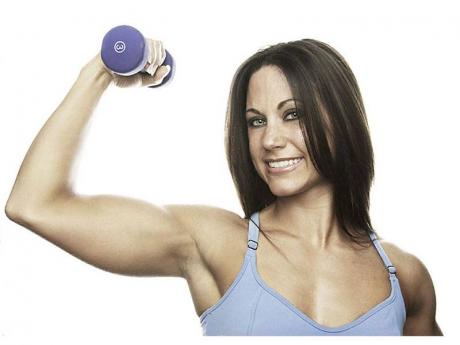Be functionally fit
By Kenneth Gardner
Maybe you have good muscle tone and you think you are in great shape physically, but are you able to perform your activities of daily living without feeling exhausted at the end of the day? Are you functionally fit?
Functional fitness focuses on developing your body to perform real-life activities in real-life situations. It requires more than the contrived or simulated environment in the weights room or the virtual situation created by the gym machine.
Traditionally, weights training isolates muscle groups and trains them individually. They are not trained to work together. Contrastingly, functional fitness integrates the actions of different muscle groups and teaches them to work with others in synergy. The muscle groups perform their work together instead of working in isolation and independently. Functional fitness builds muscles of a number of body parts simultaneously, for example, the back, shoulders, arms or abdomen, hips and legs or the entire body.
The rowing exercise mimics activities that involve bending and lifting weighted objects performed by a variety of workers that can be easily transferred to their daily experiences. Such activities teach muscle groups to perform a variety of roles, such as stabilising or mobilising body parts so that they can change from one role to another based on the variety of body actions required at any given time. Functional fitness helps us to stand on our own two feet and support our body weight in addition to the weight we accommodate when we do work as opposed to the mechanical advantages that gym machines provide us.
Use body weight
We can initiate our functional fitness by doing exercises that do not require anything other than our own body weight. This makes it even better, since many of us have difficulty controlling our own weight in activities that require balancing. An activity such as squatting on one leg will help you to recruit a number of muscle groups to improve your ability to balance by using some muscles as stabilisers and others as movers to get you in that position. At the same time others are being strengthened to improve your functional fitness.
You can then repeat the activity on a smaller base of support such as a step and learn to control your body weight as you elevate and lower yourself. The follow-up to this would be alternating your legs to integrate your muscle actions and improve your balance and functional fitness.
Once you can control or balance your own body weight, perform the activity with added weights.
As you improve, perform the same activity with increased weights or resistance. You can then do activities that will challenge your total functional fitness by doing both upper- and lower-body activities simultaneously. If you omit the integration of your muscle development, the strong muscles will become stronger and the weak muscles will remain the same. Functional fitness requires the use of multiple joints, muscles and body parts simultaneously, which require more focus and concentration so it will also be mentally challenging.
Dr Kenneth Gardner is an exercise physiologist at Holiday Hills Research Center; email: yourhealth@gleanerjm.com.

